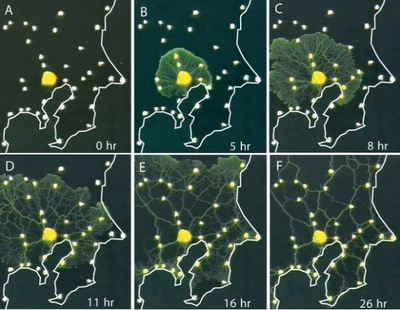Researchers in Japan and the UK have modelled the complex Tokyo rail network with remarkable accuracy by enlisting the services of the humble slime mold.
The single cell, brainless yellow mold, Physarum polycephalum is able to build highly efficient networks of nutrient channeling tubes between food sources. The researchers created a food network of oat flakes that resembled the city of Tokyo and its outer lying suburban centres. Within hours, the mold had expanded from the Tokyo centre, and then continued to refine its paths, with the resulting network established in around 24 hours. The similarities between what the mold created and the actual network are rather remarkable (and so thought Science magazine who published the study!)
As reported in Wired, the upshot of the study is that researchers have used the slime mold’s behaviour to create a “biology-inspired mathematical description of the network formation”. Step one is to create a fine mesh network that expands outwardly; the next step is to refine it so that the paths capable of carrying the most “cargo” grow even stronger, and the redundant paths fall away.
The new model has attracted keen interest, not just from the obvious transport applications, but other complex network modelling uses like communications, and cancer research.
Thank you to our Traffic Engineer Intern, Ben Krygsman, for bringing this fascinating study to our attention!


